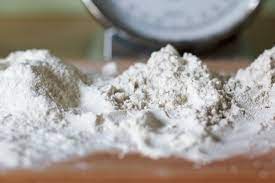No products in the cart.

Firstly, introducing Auscrops, a wonderful market vending company bridging farmers and customers together through market vendors. Click here to find out more about white flour as well fruit and vegetable offers.
White Flour – The Facts & Benefits
White flour is a staple in many kitchens, but do you know what it is and how it can benefit you in the kitchen? This post will provide an overview of white flour and its composition, nutritional benefits, and uses.
What Is White Flour?
Made when wheat grains are ground into a powdery substance. The wheat kernels are cleaned and then milled to remove the bran and germ. The remaining endosperm is what makes up white flour. It has a pale yellow color, fine texture, and slightly sweet flavor that makes it versatile for many baking recipes.
Nutritional Benefits
Contains only small amounts of nutrients, as most of the vitamins, minerals, and fiber removed during processing. However, some nutrients such as iron and B vitamins added back in to enhance its nutritional value. White flour also has a high glycemic index which means that it breaks down quickly in your body and releases glucose into your bloodstream quickly – this can be beneficial for people with low blood sugar or those who need an energy boost after exercise or physical activity.
Uses
Many uses in the kitchen including making breads, cakes, cookies, pastries, muffins, flatbreads and more! used as a thickening agent for sauces or gravies. Additionally, used to make gluten-free recipes by substituting other flours such as almond or coconut flours.
Conclusion:
In conclusion, several uses in the kitchen from baking to thickening sauces or gravies. While may not have many nutritional benefits due to processing methods used to create. Does contain some B vitamins and iron which added back into the endosperm during production. Understanding the facts about this flour can help you make smarter food choices so you can get all the benefits from this versatile ingredient!
Click here to read similar articles.
 Français
Français 












